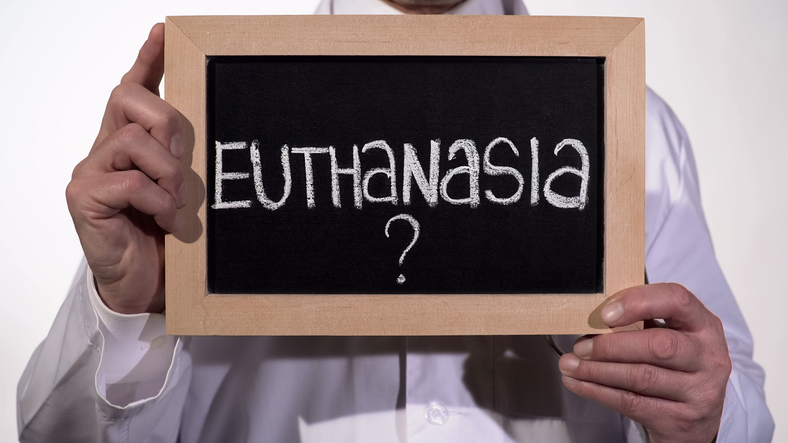
The discourse surrounding euthanasia and physician-assisted suicide (PAS) represents one of the most complex and rapidly evolving areas of modern law. It requires a delicate balancing of fundamental legal principles: the autonomy and dignity of the individual, the state’s interest in preserving life, and the ethical duties of the medical profession. For legal professionals, understanding the intricate legislative frameworks, key judicial precedents, and the precise definitions that govern end-of-life decisions is paramount.
This article provides a legal analysis of the current landscape, examines differing jurisdictional approaches, and considers a recent case that tests the established boundaries of euthanasia law.
Defining the Terms: A Matter of Legal Distinction
In legal contexts, precise terminology is critical. The terms “euthanasia” and “physician-assisted suicide” are not interchangeable and carry significantly different legal weight.
Euthanasia: This is the act of a third party, typically a physician, directly and intentionally administering a substance to end a patient’s life. From a legal standpoint, the critical element is the physician’s role as the final agent. Euthanasia can be classified further:
Voluntary: Performed at the explicit, informed, and repeated request of a competent patient.
Non-Voluntary: Performed when the patient is legally incompetent to consent (e.g., in a persistent vegetative state), based on an advance directive or the decision of a legal proxy.
Involuntary: Performed against the patient’s will, which is illegal worldwide and classified as homicide.
Physician-Assisted Suicide (PAS): In this scenario, a physician provides a competent patient with the means (e.g., a prescription for a lethal dose of medication) to end their own life. The patient must perform the final, life-ending act themselves. This distinction is crucial, as jurisdictions that prohibit euthanasia may permit PAS.
Withholding or Withdrawing Life-Sustaining Treatment: Often termed “passive euthanasia,” this is legally distinct and widely accepted. Based on the common law principle of a patient’s right to refuse medical treatment, this is not considered euthanasia or suicide in a legal sense. This right is typically exercised through advance directives (“living wills”) or by durable powers of attorney for healthcare.
A Comparative Look at Jurisdictional Frameworks
The global legal approach to euthanasia and PAS is fragmented. Broadly, we can observe a few dominant models:
The Benelux Model (Netherlands, Belgium, Luxembourg): These nations have the most permissive legislative frameworks. The Dutch Termination of Life on Request and Assisted Suicide (Review Procedures) Act of 2002 decriminalized both euthanasia and PAS under a strict set of “due care criteria.” These include the patient’s voluntary and well-considered request, their “unbearable suffering with no prospect of improvement,” and consultation with at least one other independent physician. Belgium’s legal framework is similar and has notably been extended to include mature minors under certain conditions.
The Canadian Model (MAiD): Canada’s “Medical Assistance in Dying” (MAiD) framework was established following the landmark Supreme Court decision in Carter v Canada (AG), [2015] 1 SCR 331, which found that the criminal prohibition on assisted suicide violated the Canadian Charter of Rights and Freedoms. The legislation requires that a person have a “grievous and irremediable medical condition,” though a reasonably foreseeable natural death is no longer a strict requirement for some cases.
The U.S. “Death with Dignity” Model: A growing number of U.S. states, including Oregon, Washington, and California, permit PAS but not active euthanasia. The Oregon Death with Dignity Act of 1994 served as the blueprint. These statutes typically require the patient to be terminally ill with a prognosis of six months or less to live, be mentally competent, and make multiple voluntary requests. The final act of administration must be performed by the patient.
In contrast, jurisdictions like the United Kingdom and Ireland maintain a legal prohibition on both euthanasia and PAS, where such acts can lead to charges of murder or manslaughter.
Case Spotlight: The Legal Interpretation of “Unbearable Suffering”
The recent case of Zoraya ter Beek in the Netherlands provides a critical lens through which to examine the application of euthanasia laws to non-terminal conditions. In May 2024, ter Beek, 29, received euthanasia based on years of severe and treatment-resistant psychiatric suffering, including depression and autism.
Legal Analysis: This case did not create new law but rather applied the existing Dutch Euthanasia Act to a set of facts at the edge of the public’s understanding of the legislation. Legally, the Dutch framework does not exclusively require a terminal or even physical illness. The central legal criterion is “unbearable suffering with no prospect of improvement.”
The legal process in ter Beek’s case, as reported, meticulously followed the statutory due care criteria. This involved extensive evaluation by multiple physicians over several years to legally establish that her psychiatric condition was indeed “treatment-resistant” and that her request was competent and consistent. For legal scholars, this case highlights:
The broad interpretation afforded to the term “unbearable suffering” within the Dutch legal system.
The significant procedural safeguards intended to prevent abuse in cases involving psychiatric illness.
The legal precedent it reinforces: that in the Netherlands, profound psychiatric suffering can be legally equivalent to physical suffering as grounds for euthanasia.
This outcome fuels the ongoing international legal debate, particularly the “slippery slope” argument often raised during legislative drafting and in court challenges. Opponents argue that such applications stretch the original intent of the law and pose challenges in objectively verifying the “irremediable” nature of psychiatric conditions.
Future Directions and Unresolved Legal Questions
The legal landscape of euthanasia is far from settled. Key issues that will continue to be debated in legislatures and courts include:
Conscientious Objection: The right of medical professionals to refuse to participate in euthanasia or PAS on moral or religious grounds, and how this right is balanced against a patient’s statutory right to access the procedure.
Euthanasia for Minors: While permitted in Belgium and the Netherlands, the extension of these rights to minors remains highly contentious internationally.
Evidentiary Standards: Proving that a request is voluntary and that suffering is unbearable, especially in cases of dementia or psychiatric illness, presents significant evidentiary challenges for the legal system.
As societies continue to grapple with these profound questions, the law will be continuously called upon to provide a framework that is clear, compassionate, and just, protecting both the vulnerable and the rights of the individual.
Sources:
Termination of Life on Request and Assisted Suicide (Review Procedures) Act, 2002 (Netherlands).
Carter v Canada (AG), [2015] 1 SCR 331, Supreme Court of Canada.
Death with Dignity Act, Oregon Revised Statutes, ORS 127.800-127.897.
Associated Press (2024). “A 29-year-old Dutch woman has chosen to end her life due to crippling depression. Here’s her story.”
The Guardian (2023). “Euthanasia and assisted dying laws around the world.”
